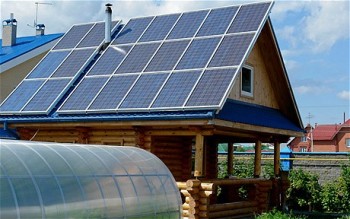Dec 10 2010
Private companies in Russia have begun investing in solar power even though Russia is synonymous with long dark winters and not sunny days. Solar Wind, a solar panel manufacturer based in Krasnodar, produces solar cells, solar modules and solar systems, mainly for export and is hoping that the market share would grow within the country too.
According to Marat Zaks, Solar Wind’s CEO, the popular opinion is to use solar power only in countries having a lot of sun. Refuting this, he states that Germany is a prime solar power consumer even though like Russia, Germany too is not a sunny country. He also mentioned that to assist the market development in the country, his company endeavors to complete an order received from a Russian customer speedily.

Several Russian private companies including Solar Wind are collaborating with the State Nanotechnology Corporate, Rusnano, to meet the local requirements. Solar Wind is partnering Rusnano in a $160 million project to produce double sided solar panels for local usage. According to Zaks, these panels are capable of capturing solar energy from both sides, and that such panels are manufactured by a few companies only. The plant may start operating either by the year end or by the beginning of 2011, and would have a 30 MW initial capacity, which would be ramped up to 120 MW per year.
Zaks remarking on the small volume of domestic sales in Russia in contrast to the voluminous exports stated that locally only regional governments and private firms are their clients whereas their international clients belong to 22 countries including US, Britain and Germany. Industry experts say that solar energy could be harnessed as an alternate to conventional energy sources in many of the regions in the country. According to Vasily Malakha, who is the head at the Electricity and Energy Council of the Commonwealth of Independent States, the insolation levels in the Krasnodar region and many parts of Siberia are on par with that of Central Italy and the South of France, where currently the solar energy sector is booming and the Zabaikalsky region produces more solar energy than the whole of Spain. The launch of the energy-efficiency program in 2006 was the turning point in the Krasnodar region, which began focusing on solar energy soon after. Solar energy is used for heating water and electricity production in this region. Alexander Kiselyov, Deputy Chief Doctor in Krasnodar’s Central Hospital in Ust-Labinsk revealed that the hospital’s roof is being covered with 300 solar panels mainly for heating water all through the year.
According to Brigitte Schmidt, who is a board member of Eurosolar Deutschland, solar energy should be used in conjunction with other renewable energy sources. She remarked that solar energy’s unpopularity in Russia was mainly because the country’s center of attention was on oil exports. The cost of constructing a solar power unit was also very prohibitive in contrast to the traditional power stations. Malakha disclosed that at present a solar power station construction could cost anything from $10000 to $17000 per kW, whereas a nuclear station would cost only$3000 per kW and hydroelectric power station $1000, making solar power economically unviable.